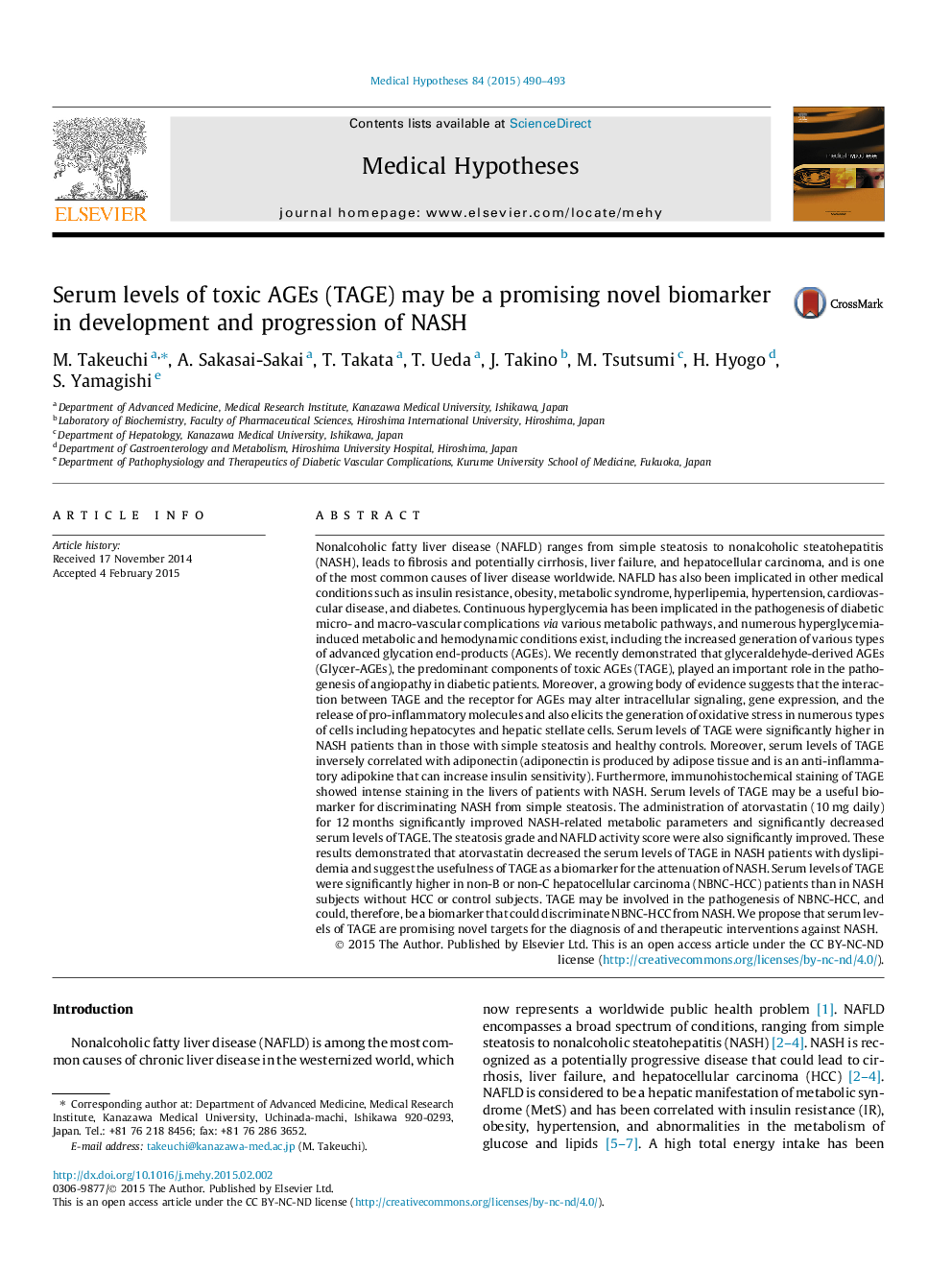| کد مقاله | کد نشریه | سال انتشار | مقاله انگلیسی | نسخه تمام متن |
|---|---|---|---|---|
| 5811390 | 1115010 | 2015 | 4 صفحه PDF | دانلود رایگان |

Nonalcoholic fatty liver disease (NAFLD) ranges from simple steatosis to nonalcoholic steatohepatitis (NASH), leads to fibrosis and potentially cirrhosis, liver failure, and hepatocellular carcinoma, and is one of the most common causes of liver disease worldwide. NAFLD has also been implicated in other medical conditions such as insulin resistance, obesity, metabolic syndrome, hyperlipemia, hypertension, cardiovascular disease, and diabetes. Continuous hyperglycemia has been implicated in the pathogenesis of diabetic micro- and macro-vascular complications via various metabolic pathways, and numerous hyperglycemia-induced metabolic and hemodynamic conditions exist, including the increased generation of various types of advanced glycation end-products (AGEs). We recently demonstrated that glyceraldehyde-derived AGEs (Glycer-AGEs), the predominant components of toxic AGEs (TAGE), played an important role in the pathogenesis of angiopathy in diabetic patients. Moreover, a growing body of evidence suggests that the interaction between TAGE and the receptor for AGEs may alter intracellular signaling, gene expression, and the release of pro-inflammatory molecules and also elicits the generation of oxidative stress in numerous types of cells including hepatocytes and hepatic stellate cells. Serum levels of TAGE were significantly higher in NASH patients than in those with simple steatosis and healthy controls. Moreover, serum levels of TAGE inversely correlated with adiponectin (adiponectin is produced by adipose tissue and is an anti-inflammatory adipokine that can increase insulin sensitivity). Furthermore, immunohistochemical staining of TAGE showed intense staining in the livers of patients with NASH. Serum levels of TAGE may be a useful biomarker for discriminating NASH from simple steatosis. The administration of atorvastatin (10Â mg daily) for 12Â months significantly improved NASH-related metabolic parameters and significantly decreased serum levels of TAGE. The steatosis grade and NAFLD activity score were also significantly improved. These results demonstrated that atorvastatin decreased the serum levels of TAGE in NASH patients with dyslipidemia and suggest the usefulness of TAGE as a biomarker for the attenuation of NASH. Serum levels of TAGE were significantly higher in non-B or non-C hepatocellular carcinoma (NBNC-HCC) patients than in NASH subjects without HCC or control subjects. TAGE may be involved in the pathogenesis of NBNC-HCC, and could, therefore, be a biomarker that could discriminate NBNC-HCC from NASH. We propose that serum levels of TAGE are promising novel targets for the diagnosis of and therapeutic interventions against NASH.
Journal: Medical Hypotheses - Volume 84, Issue 5, May 2015, Pages 490-493